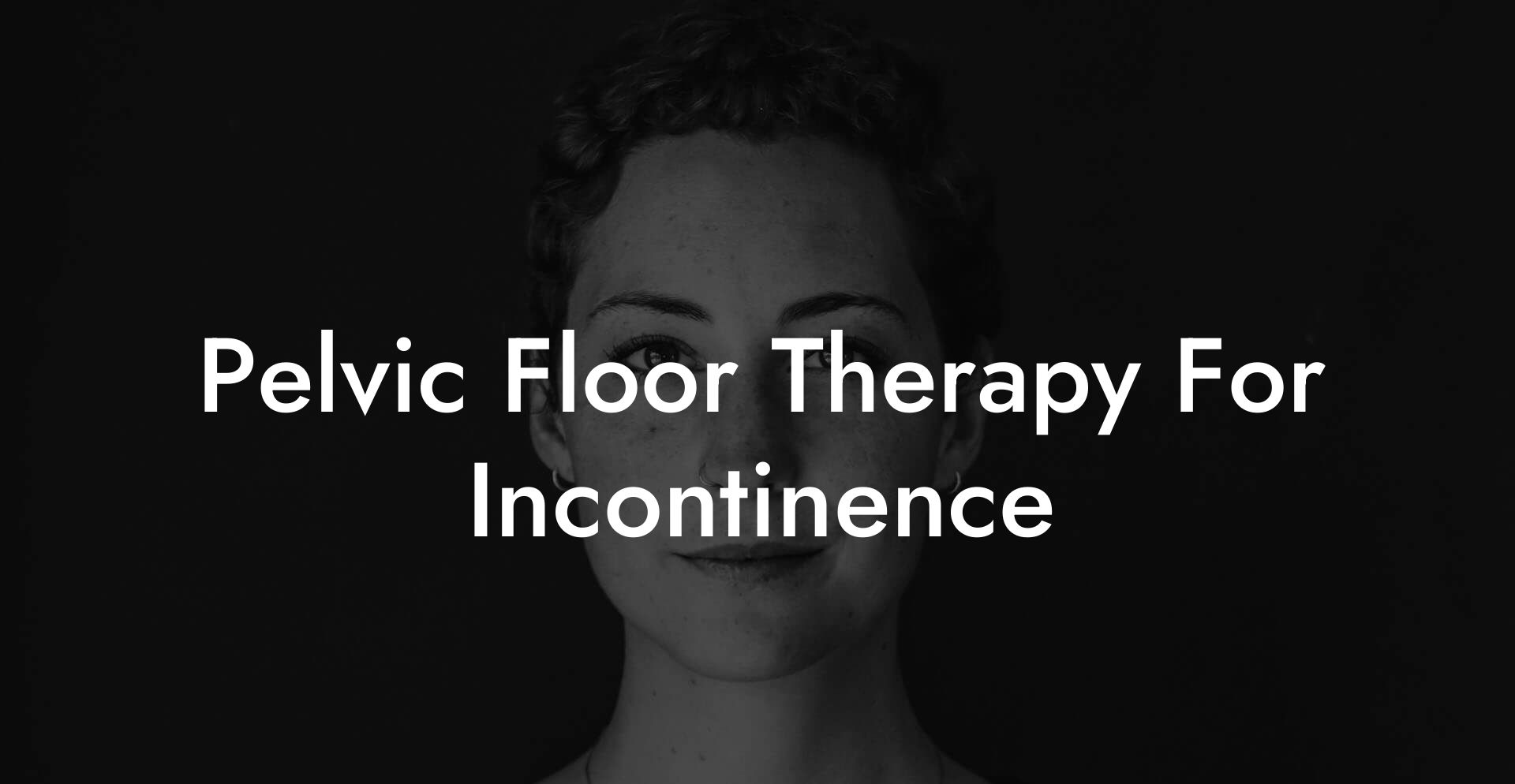Incontinence is a common issue faced by millions of people worldwide. It can be embarrassing and severely impact daily life. Fortunately, there is an effective and natural way to regain control and confidence: pelvic floor therapy. In this comprehensive guide, we will explore pelvic floor therapy – a holistic treatment that can help you combat incontinence and take charge of your life again. So, grab a cup of your favorite beverage, and let's delve into this empowering world of strengthening exercises and proven techniques!
Pelvic Floor Therapy For Incontinence Table of Contents
How Does Pelvic Floor Therapy Work?
Who Can Benefit From Pelvic Floor Therapy?
Transform Your Pelvic Floor in Just 4 Weeks: The Pelvic Floor Bible
Pelvic Floor Therapy Techniques
Pelvic Floor Therapy For Incontinence Example
Transform Your Pelvic Floor in Just 4 Weeks: The Pelvic Floor Bible
What is Pelvic Floor Therapy?
Pelvic floor therapy is a specialized form of physical therapy that focuses on strengthening the pelvic floor muscles. These muscles support the bladder, uterus, and rectum, helping to maintain continence and proper organ functioning. By targeting these muscles, pelvic floor therapy aims to alleviate incontinence and other pelvic floor disorders.
How Does Pelvic Floor Therapy Work?
Pelvic floor therapy works by strengthening the pelvic floor muscles through targeted exercises and manual therapy techniques. The trained therapist guides patients through a series of pelvic floor exercises, focusing on proper muscle contraction and relaxation. This results in improved muscle tone and coordination, leading to reduced incontinence symptoms.
Who Can Benefit From Pelvic Floor Therapy?
Pelvic floor therapy is beneficial for both men and women suffering from incontinence. It is especially effective for stress incontinence, which occurs during physical activities like coughing, sneezing, laughing, or exercising. Additionally, it can also be helpful for urge incontinence, characterized by a sudden, intense urge to urinate, followed by involuntary bladder contractions. Pregnant women, postpartum mothers, aging individuals, and patients recovering from pelvic surgery can all benefit from pelvic floor therapy.
Pelvic Floor Therapy Techniques
Now that we understand the basics of pelvic floor therapy, let's explore some common techniques used in this treatment:
kegel exercises
kegel exercises are the cornerstone of pelvic floor therapy. They involve contracting and relaxing the pelvic floor muscles, much like how you stop the flow of urine midstream. The key to performing Kegels effectively is to focus on isolating and activating the right muscles without engaging the abdomen, thighs, or buttocks.
Biofeedback
Biofeedback utilizes specialized sensors and equipment to monitor pelvic muscle activity, providing immediate feedback to the patient and therapist. This helps patients learn to engage the right muscles during exercises and monitor their progress.
Manual therapy
Therapists use hands-on techniques such as soft tissue mobilization and trigger point release to help improve muscle function and reduce pain.
Pelvic floor muscle training tools
These devices aid in providing resistance during exercise, promoting pelvic muscle strength, control, and endurance. Common tools include vaginal weights and biofeedback devices.
Pelvic Floor Therapy For Incontinence Example
Consider a 35-year-old woman who recently gave birth to her second child. She has been experiencing stress incontinence since her pregnancy and finds it difficult to control urine leaks during daily activities like lifting her baby, coughing, or sneezing. After consulting with her healthcare provider, she is referred to a pelvic floor therapist.
During her first session, the therapist begins with a thorough assessment of her pelvic floor muscle strength and coordination. They then guide her through targeted exercises such as Kegels and provide personalized advice on how to perform these exercises at home. Over several weeks of regular therapy sessions and consistent practice, she notices a gradual improvement in her incontinence symptoms, leading to increased confidence and quality of life.
In conclusion, pelvic floor therapy is a versatile, natural, and empowering treatment option for incontinence. With the guidance of trained professionals, commitment to practice, and consistency in exercise, individuals can strengthen their pelvic floor muscles and regain control of their everyday lives.
Do you know someone who could benefit from this information? Don't hesitate to share this post with them! And for more expert advice on how to improve your pelvic health, be sure to check out our other guides on Pelvic Floor Therapy.













